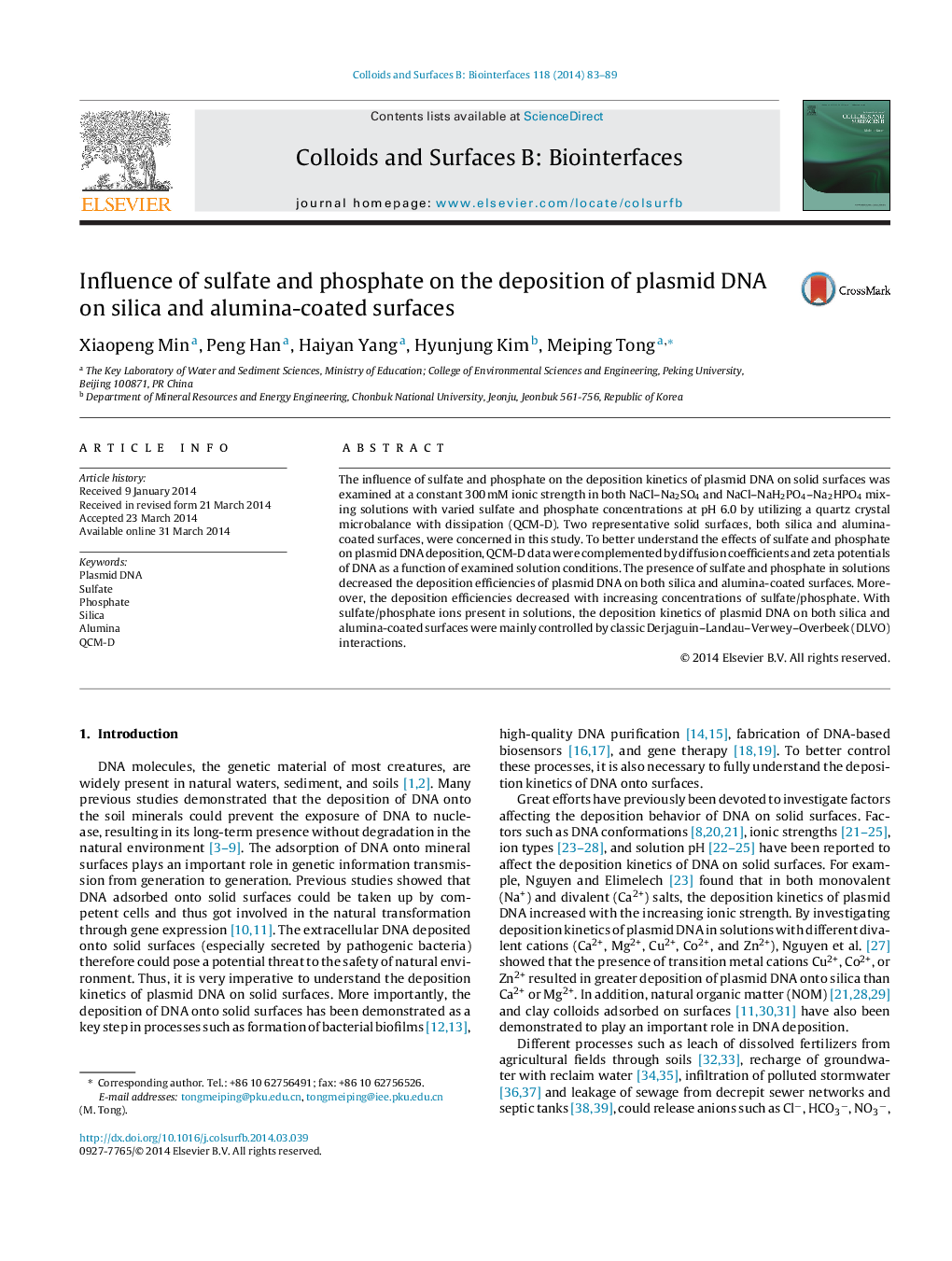| Article ID | Journal | Published Year | Pages | File Type |
|---|---|---|---|---|
| 599672 | Colloids and Surfaces B: Biointerfaces | 2014 | 7 Pages |
•Both sulfate and phosphate decrease DNA deposition on silica and alumina surfaces.•DNA deposition decreases with increasing sulfate and phosphate concentrations.•Adsorption of anions on DNA contributes to the decreased DNA deposition.•DNA deposition on silica and alumina surfaces is controlled by DLVO forces.
The influence of sulfate and phosphate on the deposition kinetics of plasmid DNA on solid surfaces was examined at a constant 300 mM ionic strength in both NaCl–Na2SO4 and NaCl–NaH2PO4–Na2HPO4 mixing solutions with varied sulfate and phosphate concentrations at pH 6.0 by utilizing a quartz crystal microbalance with dissipation (QCM-D). Two representative solid surfaces, both silica and alumina-coated surfaces, were concerned in this study. To better understand the effects of sulfate and phosphate on plasmid DNA deposition, QCM-D data were complemented by diffusion coefficients and zeta potentials of DNA as a function of examined solution conditions. The presence of sulfate and phosphate in solutions decreased the deposition efficiencies of plasmid DNA on both silica and alumina-coated surfaces. Moreover, the deposition efficiencies decreased with increasing concentrations of sulfate/phosphate. With sulfate/phosphate ions present in solutions, the deposition kinetics of plasmid DNA on both silica and alumina-coated surfaces were mainly controlled by classic Derjaguin–Landau–Verwey–Overbeek (DLVO) interactions.
Graphical abstractFigure optionsDownload full-size imageDownload as PowerPoint slide
